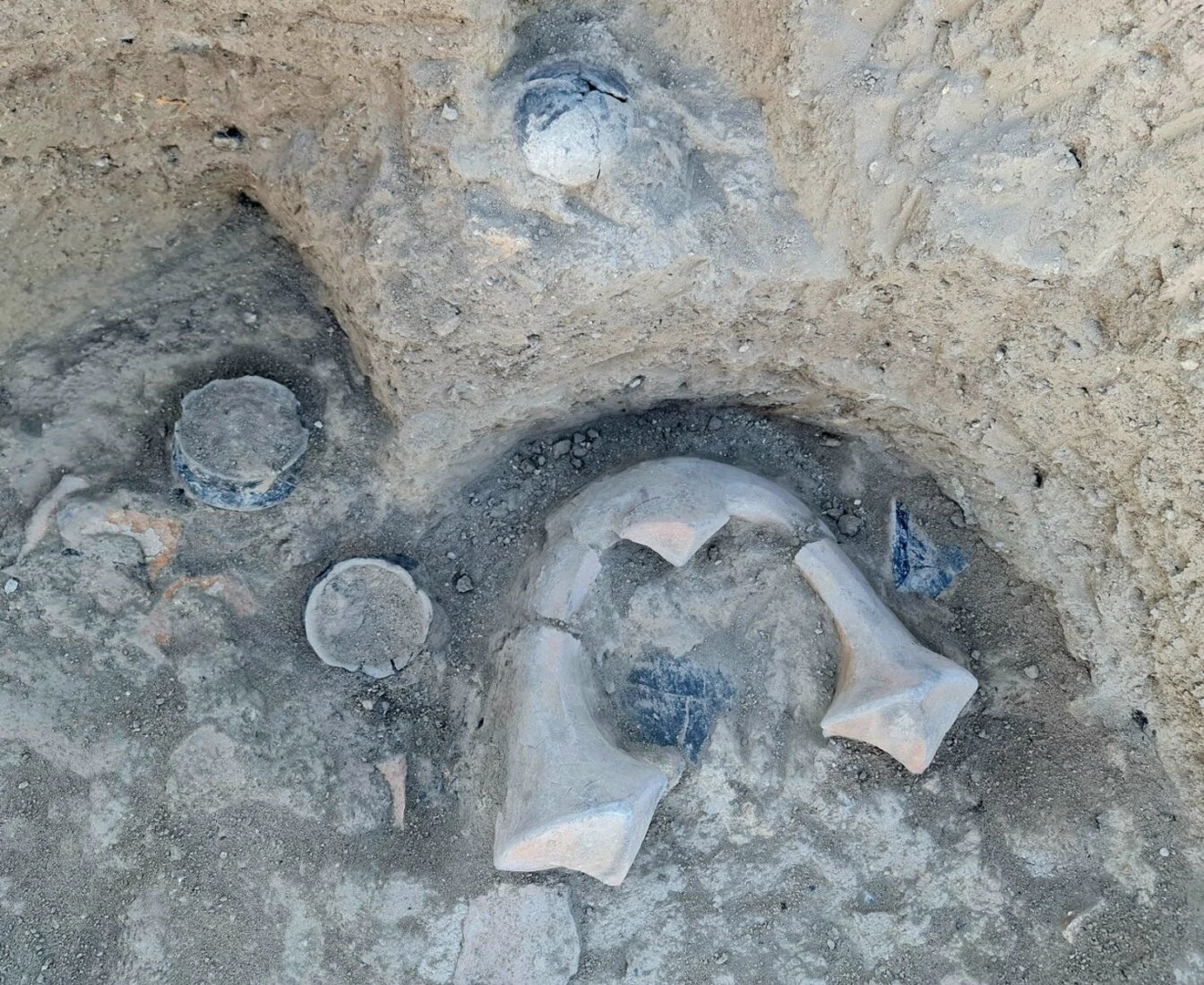Ancient sacred hearths unearthed in Elazig restored to former glory
 The restoration of two sacred hearths and terracotta vessels unearthed during excavations at Elazig Tadim Castle and mound has been completed, April 21, 2025. (IHA Photo)
The restoration of two sacred hearths and terracotta vessels unearthed during excavations at Elazig Tadim Castle and mound has been completed, April 21, 2025. (IHA Photo)
Two ancient sacred hearths uncovered during archaeological excavations at the Tadim Fortress and Hoyuk in Elazig, eastern Türkiye, have been fully restored, Turkish authorities announced.
Echoes from 6,000 years ago
Elazig Governor Numan Hatipoglu revealed that the hearths, dated between 4,000 and 3,200 B.C., were discovered during 2024 excavations conducted within the boundaries of Tadim village. The findings, he said, offer a window into the early spiritual life of Bronze Age communities in the region.

“These sacred hearths stand out with stylised human and bull figures carved onto them,” said Governor Hatipoglu. “They represent the sanctity of family and the role of domestic rituals in early societies.”
Sacred symbols of a forgotten faith
Archaeologists suggest that these hearths were not merely architectural elements but carried profound spiritual significance. The figures adorning them—depicting humans and bulls—are believed to have held symbolic meaning, possibly connected to fertility, protection, and ancestor worship.
The excavation and restoration works were carried out by a team of experts from the Elazig Museum of Archaeology and Ethnography, operating under the Provincial Directorate of Culture and Tourism.

A new home in the museum
Now that restoration is complete, both hearths will be exhibited at the Elazig Museum, offering visitors a rare glimpse into the beliefs and daily life of early Anatolian civilizations.
Governor Hatipoglu extended his gratitude to all the professionals and teams who contributed to the project, noting, “These findings shed light not only on ancient architecture but also on the belief systems that shaped human history thousands of years ago.”



